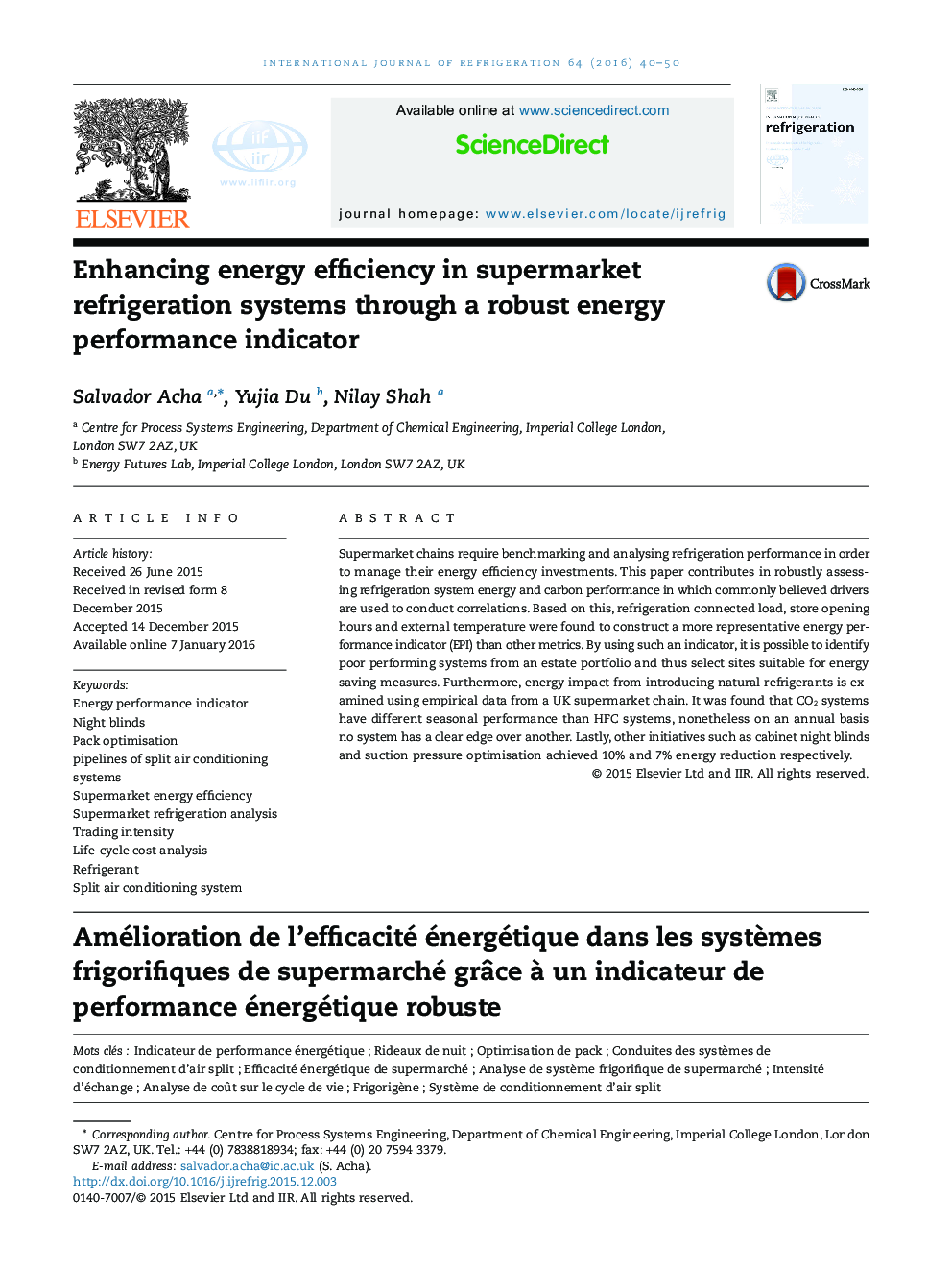| Article ID | Journal | Published Year | Pages | File Type |
|---|---|---|---|---|
| 786764 | International Journal of Refrigeration | 2016 | 11 Pages |
•An energy performance indicator for retail refrigeration is presented using food retail datasets.•The performance indicator is based on connected load, opening hours and cooling degree days.•Energy use comparison of HFC and CO2 refrigerant systems is conducted and insights are outlined.•A case study of energy savings using cabinet night blinds and suction pressure optimisation in a supermarket is showcased.
Supermarket chains require benchmarking and analysing refrigeration performance in order to manage their energy efficiency investments. This paper contributes in robustly assessing refrigeration system energy and carbon performance in which commonly believed drivers are used to conduct correlations. Based on this, refrigeration connected load, store opening hours and external temperature were found to construct a more representative energy performance indicator (EPI) than other metrics. By using such an indicator, it is possible to identify poor performing systems from an estate portfolio and thus select sites suitable for energy saving measures. Furthermore, energy impact from introducing natural refrigerants is examined using empirical data from a UK supermarket chain. It was found that CO2 systems have different seasonal performance than HFC systems, nonetheless on an annual basis no system has a clear edge over another. Lastly, other initiatives such as cabinet night blinds and suction pressure optimisation achieved 10% and 7% energy reduction respectively.
